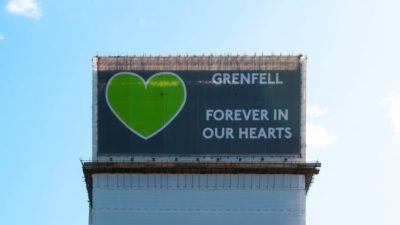Fire safety is an evergreen concern when it comes to the construction and management of buildings, whether commercial, industrial or residential. The matter has become a prescient one in recent years, though, as high-profile fire incidents – including the tragic Grenfell fire of 2017 – caused manufacturers and regulatory bodies to re-examine key aspects of their fire safety approach.
The Grenfell tragedy in particular sent shockwaves through the construction industry, as architects and materials manufacturers began to receive public blowback for producing and utilising flammable cladding in high-rise projects. One of the many outcomes of the various inquests and investigations surrounding Grenfell and related incidents has been a re-focusing of the coverage of fire safety regulation.
Indeed, 2022 has seen new changes administered to fire safety regulation, enshrining new provisions and requirements into law in order to protect future occupants in new developments. But what exactly are the changes that have come into effect, and how might they affect your approach to construction or design?
MCM PE Cladding Ban
One of the leading changes introduced as part of the new fire safety legislation is a ban on a form of Metal Composite Material cladding, or MCM cladding for short. The banned cladding has an unmodified polyethylene (PE) core – a plastic commonly found in packaging.
This type of cladding was identified as that responsible for the fast spread of fire up the Grenfell tower; the composite metal surfaces conducted heat to the inner PE core quickly, which then melted and combusted. The ban on such cladding was previously extended only to buildings above 11 metres in height, but the new legislative changes apply to buildings of any height.
New Guidance
The MCM PE cladding ban has been shored up by a shift in regulatory guidance regarding alternative cladding materials, enabling architects and designers to better identify suitable, safe materials for new developments. This guidance update includes refreshed links to updated British Standard classifications.
Architects and contractors are encouraged to find alternatives that are not just suitable, but also ecologically sensible. As an example to new contractors, treated timbers are renewable and exhibit fire-retardant qualities over untreated alternatives, enabling the construction of bespoke, design-friendly solutions for external wall materials.
New Active Fire Protection Provisions
The Grenfell disaster also highlighted serious inadequacies surrounding active fire protection systems and processes, with judgement errors and miscommunication linked to unnecessary casualties. The new legislation goes some way to addressing this, by introducing new requirements for new developments to aid occupants/residents and firefighting personnel.
The first change is the introduction of a secure information box, to be installed and filled with pertinent building and resident information. This box is accessed by firefighters in the event of an incident. The second change is the installation of alert systems throughout new high-rises, that enable rescue teams to properly communicate with residents or occupants regarding escape and refuge strategy.


